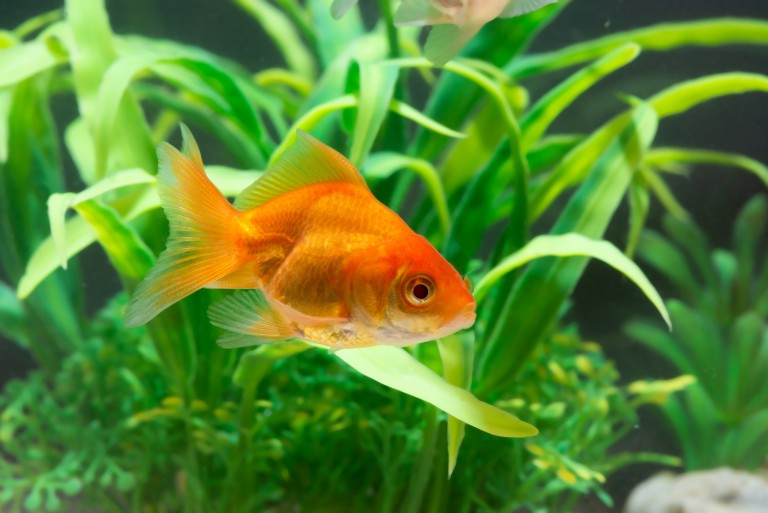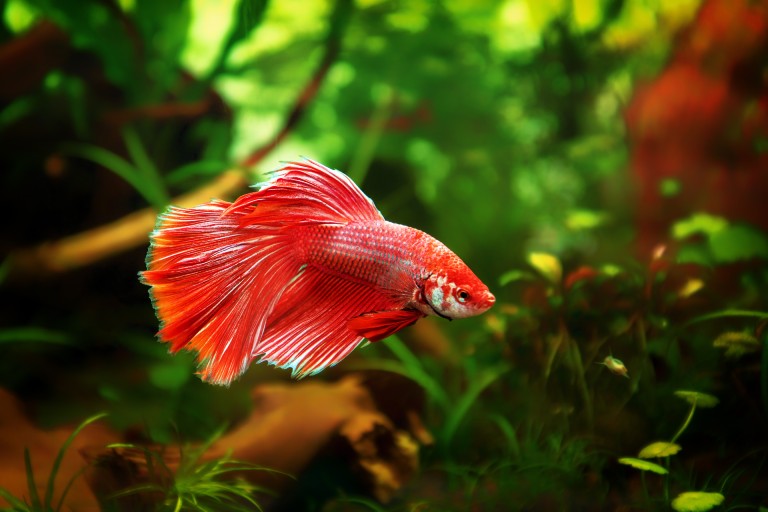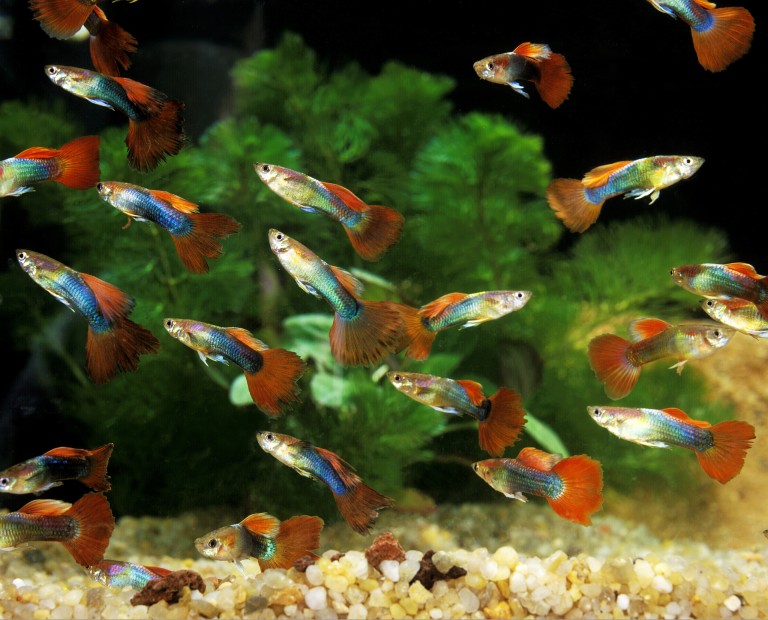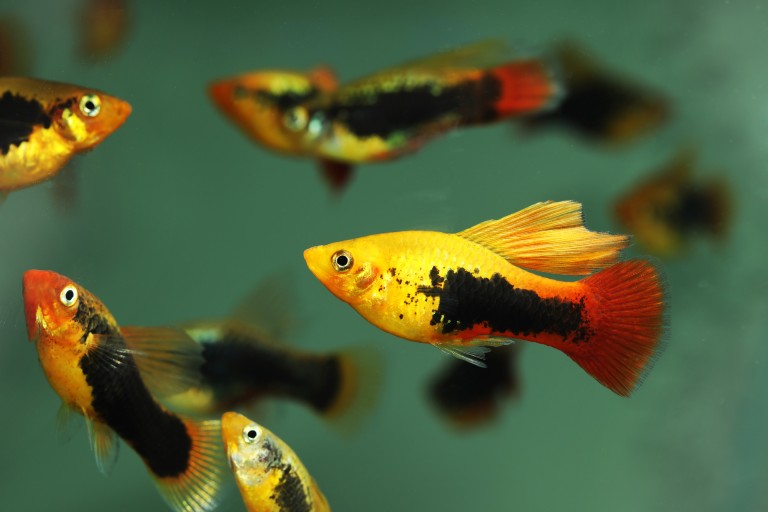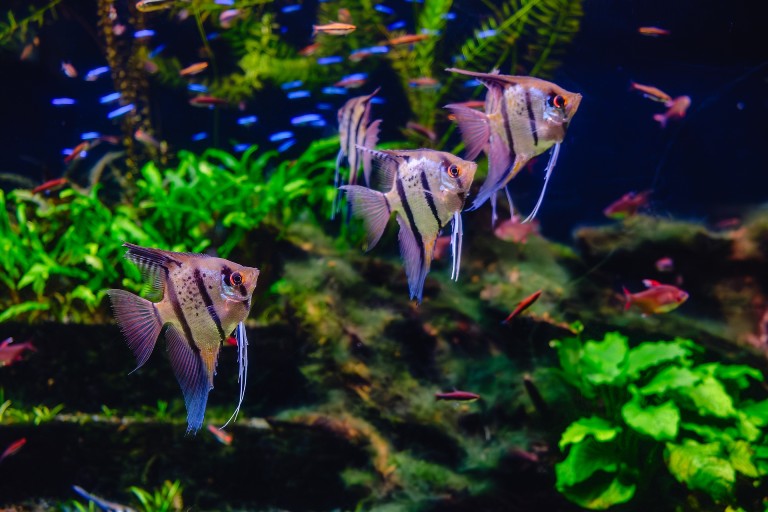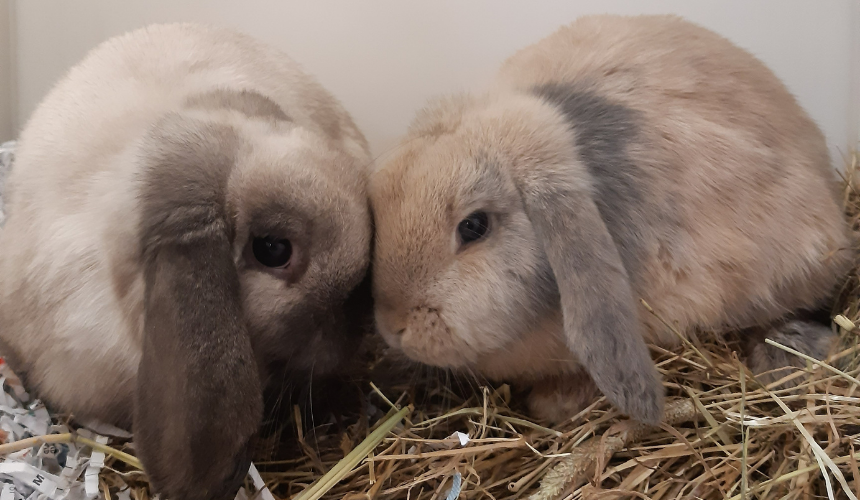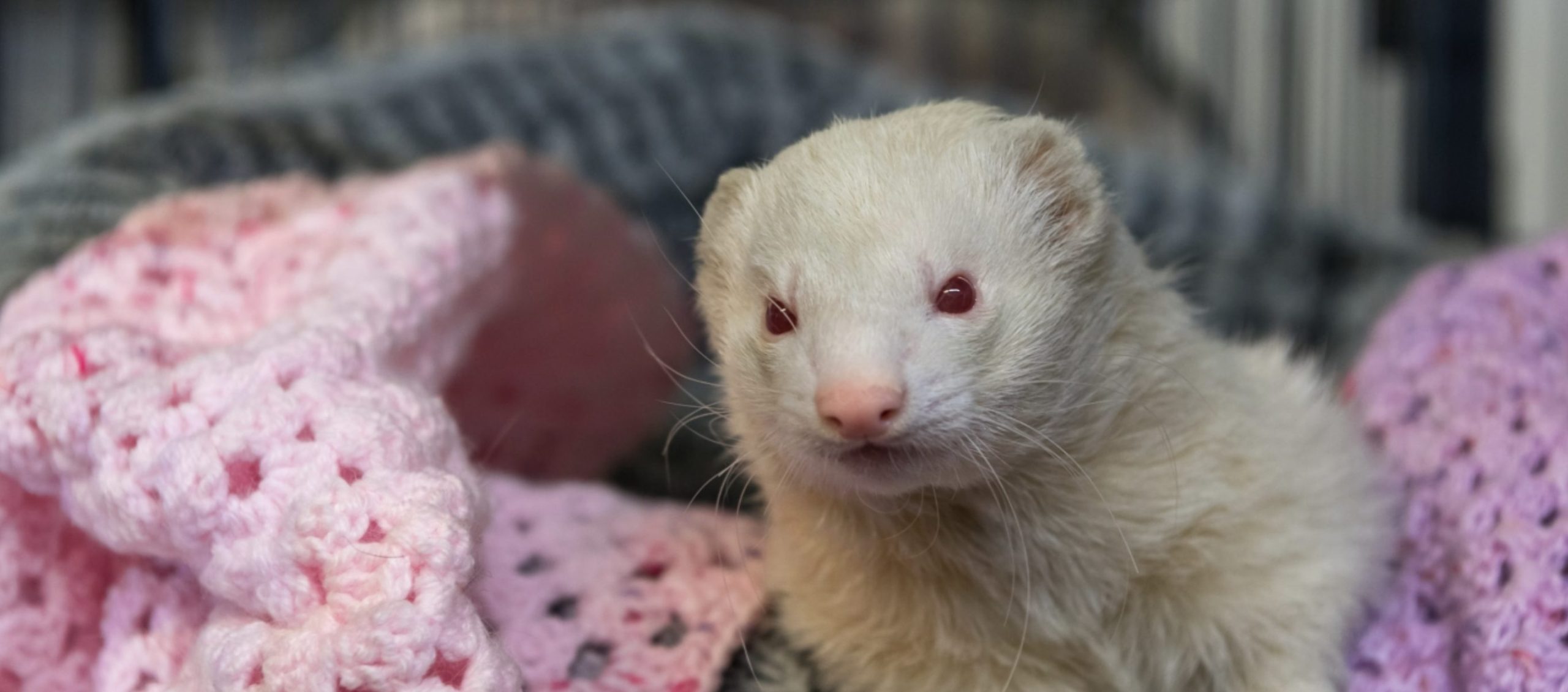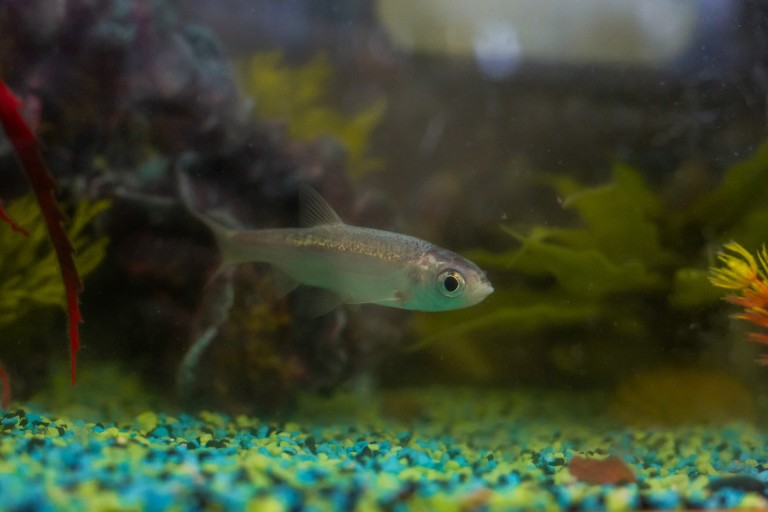
Pet Fish
From Goldfish to Guppies, a pet fish can bring joy to any life. But don’t be mistaken, these aquatic animals require routine care and affection just like any other pet.
Having a pet fish is a rewarding experience but it’s not a decision to be made lightly. You will need equipment, time and patience to ensure that they lead a happy, healthy life. Check out the advice below to ensure that you have everything ready for your new pet.
What are the most popular pet fish?
There are many different species of fish that you can have as a pet, each with their own set of specific needs. They can be tropical, meaning they need to be kept in a heated aquarium, or cold water, referring to freshwater species that are best kept in unheated tanks.
Finding the right fish for you requires a bit of research but to help you on this journey, here’s a list of the best beginner fish:
Goldfish
Goldfish are the most popular cold-water pet fish. Bright orange with a bubbly personality, this species makes a great pet. They usually live around 10-15 years, but with proper care can live way into their 20s. They can also reach up to 30cm in length.
Selective breeding, used to exaggerate certain physical features or make them ‘look more interesting’, has weakened some varieties of Goldfish, causing them to develop health problems. We discourage this practice and any practice that has a negative impact on the health and welfare of animals for aesthetics.
Betta
This bright, tropical fish is often kept by itself in a small aquarium, making it a great choice for a first-time fish owner. They are active and personable, a great companion all around.
They live anywhere between 2-5 years old and average around 6-7cm in length.
Guppies
A species with many different colour strains, these flamboyant fish like to be kept in a group and are active swimmers. They’re popular with both new fish-keepers and experts.
They usually live from 2-3 years and are small in size, generally growing to approximately 4cm.
Mollies
Usually around 6cm in size when they’re adults, these fish are another good choice for beginners. Like Guppies, they are active and like to live with a group. They typically live for 3-5 years.
Angelfish
One of the most recognised tropical fish, this distinctive species can make a great pet. Living for around 10-12 years, this fish is sociable and peaceful.
They grow to no more than 15cm long and are best kept in aquariums over 80cm long. They’re part of the cichlid family, many of which make great additions to aquariums.
Some more species of tropical fish, good for beginners, include:
- Neon Tetras
- Zebra Danios
- Cherry Barbs
- Golden Barbs
- Cardinal Tetra
Many tropical fish species are best kept in groups as it helps promote schooling behaviour, the synchronised swimming of a group of fish, which aids in stress reduction and combats loneliness.
How to take care of a pet fish
Taking care of a pet fish isn’t a walk in the park (or a swim in the tank), it requires preparation, time, and patience. Fish can’t show us their feelings as easily as other animals, so it’s important to be aware of how to best prepare for, and look after, your new pet.
Pet fish need:
- An aquarium
- A filter
- A heater (mostly for tropical fish)
- A thermometer
- Suitable lighting
- Decorations and mental stimulation
- Plants
- Water conditioner
- Water test kits
Aquariums
To help your new pet fish thrive, a suitably sized aquarium is needed. This must be cleaned regularly and maintained in order to provide your pet with a safe and stable environment.
In terms of the size – go big or go home. Always go for larger than the minimum size required for your pet. Larger volume aquariums have more stable temperatures and water conditions, making for happier and healthier fish. Every fish is different and will require a different sized tank.
Alongside this, don’t overcrowd your tank. A collection of multicoloured, tropical fish is beautiful, but overcrowding can cause a number of issues. Too many fish in one tank can pollute the water and reduce oxygen levels, leading to disease and death.
The quality of the water can also be affected by the temperature, water source, water filter and how often you clean it. Be sure to consistently check each of these things to make sure they’re working/adequate.
The shape of your aquarium is another important factor. A suitable surface area is needed for oxygen to diffuse into the water. Taller, narrower tanks can potentially lead to lower oxygen levels, whereas a wider tank with a larger surface area allows for a more efficient oxygen exchange.
Also look out for the position, or placement, of the tank. Don’t keep it near heat sources such as direct sunlight or a radiator as this can disrupt the set temperature. Position it on a sturdy surface away from pollutants such as smoke or aerosol sprays.
Ensure you’re keeping an eye on your filters. A filtration system is essential to the health of your pet fish as they release ammonia into the water which is toxic. Ensure you’re cleaning your filter regularly, alongside the tank itself.
Changing the water of your aquarium is also essential to the health of your fish. A ‘water change’ is where you remove a percentage of the used water in the tank and replace it with fresh, treated water. Replacing all of the water in the aquarium would remove the beneficial bacteria that grow in the tank and keep your fish healthy. Leaving your fish in the tank, remove 10% of the water – preferably weekly – and replace it with fresh water. If using tap water, use a dechlorinator before pouring it in the tank or leave it to sit for at least 24 hours. Chlorine is dangerous to both the fish and the good bacteria in the tank.
When refilling the aquarium, ensure the temperature of the new water is the same as the water already in the tank. A change in temperature can shock your fish, causing unnecessary stress and harm. You can get a separate fish tank heater to bring the water to temperature before adding it in.
Just because the water in your tank is clear, doesn’t mean that it’s clean. It will be full of waste and food particles so replacing part of it weekly will help your fish thrive. Water testing kits are an essential purchase, especially those made for ammonia and nitrite levels. Once a fortnight you should be testing your water quality. If the tests show the levels of these chemicals to be higher than 0mg/L each, you must change half of the water each day, using the advice and tips above, until it improves. If it doesn’t, you may need to make some serious changes to improve your water quality.
Cycling your aquarium is the most important thing to do before introducing your pet to their new home. It takes time to establish the good bacteria that keeps the tank healthy. If it’s a new aquarium, then you should run your filter for a few weeks before bringing your pet home. To start with, you must ‘seed’ your tank with a product that will begin the growth of this bacteria. Test your water every day during this period, only adding your fish when the levels of ammonia and nitrite have spiked and then returned to zero. This process will take at least two weeks, usually longer.
The correct temperature of the water in your tank depends on the species of your pet fish. Goldfish thrive in temperatures of 10-21 degrees whereas tropical fish usually live in higher temps. It’s important to always have a thermostat handy to check your tank is operating at the right temperature.
The lighting of your aquarium also affects how your fish thrives. The best option is to use artificial lighting on a cycle of 8-10 hours a day, switching it off at night, as this best imitates the lighting conditions of the wild.
When introducing your new pet fish into their aquarium, take a few measures to make sure they acclimate to their new home accordingly. Leave them in the container of water that they arrived in and place this into the tank for half an hour. This allows the water in the container to come to the temperature of the tank. Then, use a net to transfer your pet to the aquarium and discard of the water in the container. Don’t empty this straight into your tank as it will disrupt the environment you’ve caringly created. Also, turn the tank lights off before placing your fish in and keep these off for the whole day and night – this will help them explore their new home and settle in.
Unsuitable aquariums
Decorative tanks are generally not designed for fish to live happily in. They’re made for aesthetics rather than welfare. Tanks such as goldfish bowls or children’s tanks are rarely big enough for fish to thrive in as there’s no room for a suitable filter and a small surface area. With these small tanks, the temperature and oxygen levels can fluctuate, leading to stress and even death.
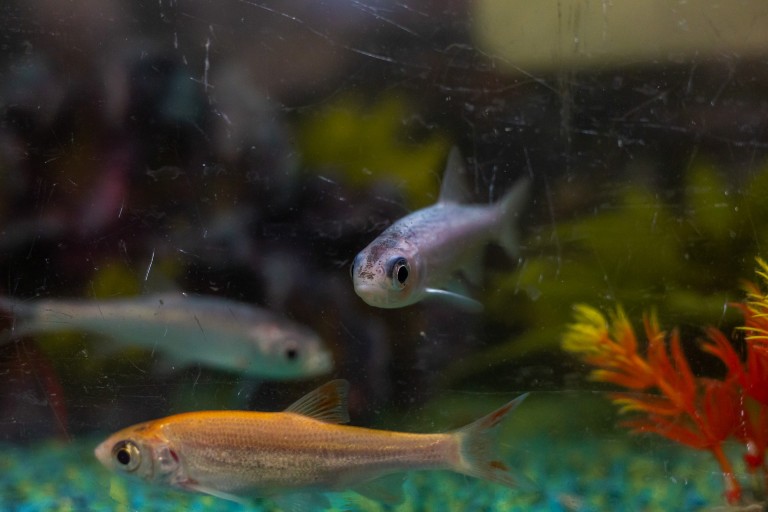
Signs your fish is unwell
As touched upon before, your fish can’t communicate when they’re feeling unwell so it’s important to keep an eye on them and get help when they need it.
Signs of sickness include:
- Sticking out scales
- A distended stomach
- Pale patches on their scales
- Milky eye
- Gulping or gasping at the surface (oxygen starvation)
- Swimming unusually – such as sinking to the bottom or swimming to one side
- A change in activity levels (this could be a sign of a temperature drop)
- White tufts covering their body and fins (fungus disease)
- Tiny white spots on their skin, gills and fins (white spot disease)
- Wasting of tissue between their fins (fin rot)
- Loss of balance and an inability to swim properly (swim bladder disease)
- A bloated body and protruding scales (dropsy)
If they are exhibiting any of these symptoms, contact your vet.
How long do pet fish live?
How long your fish lives depends on their species. Usually, smaller species have shorter life spans and larger fish live a bit longer. The care and attention you give to your fish, and their living space, plays a huge part in the longevity of their life.
Where to buy pet fish
It’s important that you do your research before buying a pet fish. Ensure you have everything suitably set up and are prepared to welcome your new pet.
We recommend buying your pet from a rehoming centre or a reputable aquatics retailer.
Always do your due diligence and ask questions about the origins of the fish. If anything feels off, then do not buy the pet and report any welfare concerns to us.
Unfortunately, it’s not illegal for animals to be given away as prizes at places like funfairs and festivals. This is an unethical way to get a pet fish as they’ve most likely been mistreated. Winners of this ‘prize’ don’t usually have the correct set up at home to properly look after it, increasing the chances of it being thrown away or neglected. When fish are given as prizes they’re usually kept and transported in plastic bags or other unsuitable ‘enclosures’ which can cause death by suffocation or temperature fluctuation.
It can also be dangerous to buy fish that have to be transported by post. When fish are not transported properly, they can suffer from shock and suffocation. They produce a lot of waste and use up oxygen quickly, especially if there’s multiple fish in one container. When fish are shipped by post its impossible for them to be receiving the correct care and attention – they will suffer.
When choosing fish in a pet shop ensure that the shop has healthy animals. Their fish tanks should be clean with clean water and no deceased fish in them. They should seem active and be swimming around without problem. Be sure to look out for all the signs of an unwell fish that are mentioned above.
What to feed your pet fish
Pet fish predominantly feed on specially made fish food, found in pet shops and aquatic retailers. It’s important that you find the right food for your species as they all require different nutrients and varying balances of protein and vegetation. As with any animal, do your research before giving your pet any food for the first time.
When feeding your fish, it’s good to set up a feeding routine to give them structure. Each routine is different but generally feed them 2-3 times a day at roughly the same time. You will find that they will learn his routine and be waiting for you to feed them when the time comes around.
The amount of food you give them depends on the size and quantity of the fish in your tank. Always refer to the serving suggestion on the pack. Ensure you don’t overfeed your fish as this can impair their health and swimming ability and remove any uneaten food from their tank so it doesn’t begin growing nasty bacteria.
We hope this helps give your pet fish a lovely life
If you found this advice helpful, please consider giving a one-off donation today to help us continue our efforts to support and protect all animal life in Scotland.
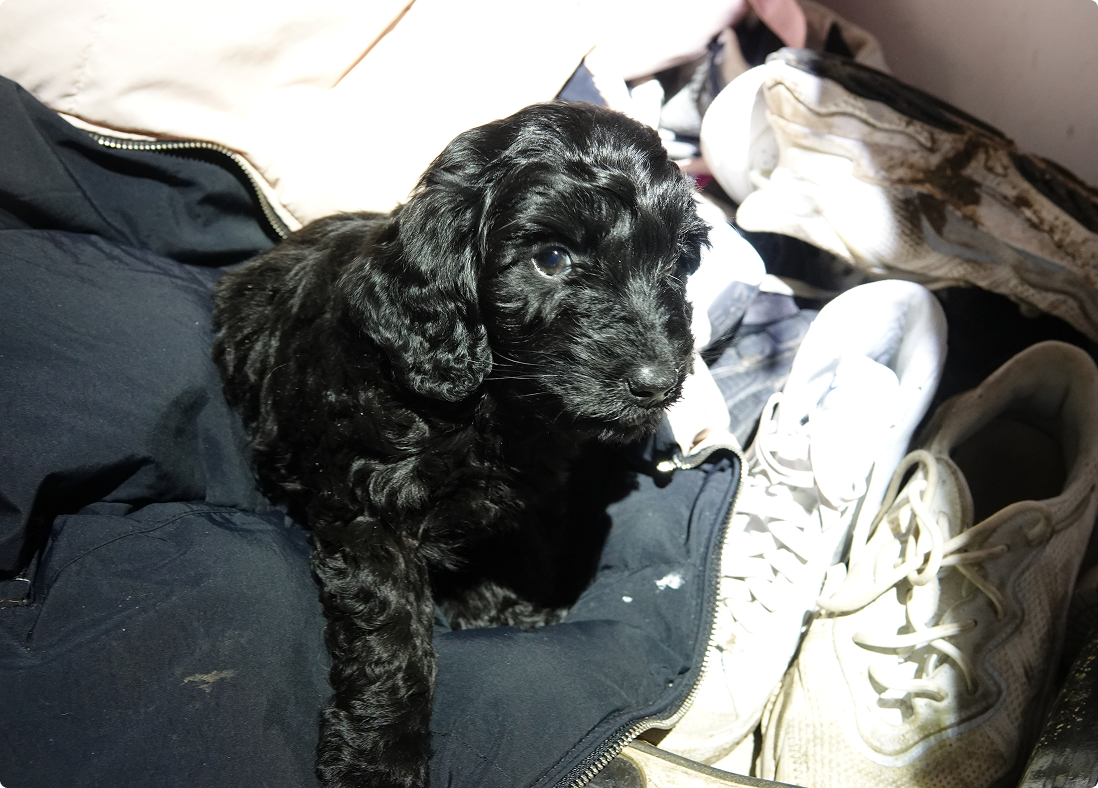
Puppies across Scotland need your help
Please consider giving a monthly donation today. Give Scotland’s animals the gift of safety this winter and beyond. The criminals involved in the low-welfare puppy trade never stop. And with your help, neither will we. Every £1 matters to puppies like Winnie.
